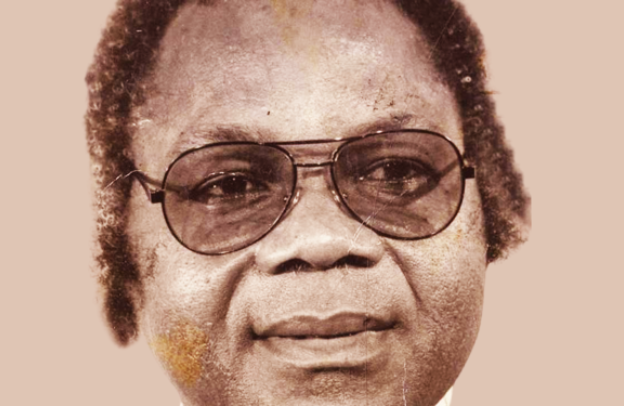Sojourner Truth, American Abolitionist And Activist – 1797 To 1883

Sojourner Truth was among the few blacks born into slavery, traded, and exchanged from one slave master to another. Being a woman vulnerable and at the mercy of several masters, Truth had a bitter experience while growing up as a black woman and slave.
Want to learn more about storytelling? Start by downloading the first chapter of The Storytelling Mastery for Businesses.
Amidst the obvious adversity, Truth clamped down hard on her determination, the hope for freedom held sway in her life and encouraged her to keep struggling. When time ticked right, Sojourner Truth made her escape and threw her arms up as the wind of freedom breezed through her.
Despite that, Sojourner embarked on freeing other subjugated blacks, postured, and fought for the civil rights of all African Americans and women. Her efforts towards liberating the blacks won her an immortal life. She became the first black woman to have ever crushed a white man in court.
Check out our Life & Legacy Series to read more about similar stories.
Sojourner Truth’s roles in the lives of Blacks had left a permanent imprint in all African American minds that even after death, her works, name, and life still breathe in society.
What Was Growing Up Like for Sojourner Truth?
Sojourner Truth was born in 1797 in Ulster County, New York as Isabella Baumfree and she was the 10th of 12 children of James and Elizabeth Baumfree who worked as slaves in the Hardenbergh estate.
Owning to the fact that their owners were Dutch, Truth grew up with Dutch language as her first language which in later life accented her English language speaking skills.
Like every other Black slave, Truth grew with the knowledge of her parents working in the farms of their owners, thus giving her the medium to learn farming– a skill that proved invaluable in her later life.
At the age of nine, Truth was auctioned off by her original master and was sold at $100 along with a flock of sheep to John Neely. Truth’s experiences with Neely were stern, different from what she once knew while growing up, thus she called Neely “cruel and harsh.”
In just about a few years, Neely sold Truth at the rate of $105, moving her into the hands of Martinus Schryver, a tavern owner. However, Martinus owned her for a short while until he sold her off to John Dummont, the man in whose hands Truth’s life turned darker.
While working as John’s slave, Truth got harassed by John’s wife, Elizabeth, and John seized every opportunity to rape Truth. By 1815, Sojourner Truth met Robert, a slave in a neighboring farm who stole her breath and heart away.
Their love was forbidden by both slave masters and with their power, they ensured to separate the two. Regardless, the two fostered their love for each other until the day Robert’s master caught him sneaking away to meet with Truth and beat the young man to death.
Truth’s heart was bruised after Robert passed away but before long, John forced Truth to marry an older slave man from his estate, Thomas. Thrust into the unwanted marriage, Truth bore five children, though one of the five children was a result of John’s continuous rape.
Sojourner Truth’s Escape To Freedom
The emancipation law passed on July 4, 1799, allowed for the freedom of all slaves born before or after the date. A spate of slaves got their deserved freedom. However, others born before this stipulated date remained perpetually slaves. By luck, a new legislation was made for the freedom of slaves which was to take effect on July 4, 1827.
That stirred the hopes of Blacks, Truth inclusive. However, her corny owner, John watered Truth’s desire for freedom by promising to emancipate her in July 1836, before the actual date.
True hung onto the promise, hoping to attain her liberty, however, her hopes were dashed by John when he didn’t liberate her in 1826.
Sojourner Truth’s well of patience was already overwhelmed, hence she took matters into her own hands and found her way to freedom with her infant daughter, Sophia clutched in her hands.
Truth and her infant made it to New Paltz, New York, and were taken in as free slaves by Isaac and Maria Van Wagenen. It had hurt Truth to have left her other children behind but in later years that ensued, she worked to bring them back.
However, while under Isaac and Maria Van Wagenen’s watch, John Dummont traced Truth there and came visiting, demanding he took Truth back. However, an agreement was reached between John and Van Wagenens, paying John $20 for Truth’s labor until the literal date of emancipation in 1827.
Sojourner Truth’s Victorious Court Cases
Despite the abolition of slaves by the government, John Dummont still sold Peter, Truth’s son to a slave master.
She was incensed and worried about her son, however, with the help of Van Wagenens, Truth filed a case against her former owner.
Fortunately, the case was ruled in her favor and so she got her son, Peter.
Sojourner Truth found her footing in Christianity while under the tender care of the Van Wagenens as she worshipped alongside other believers. And so, by 1829, she and her son, Peter migrated from New Paltz to New York where she took housekeeper roles while also drilling deeper into her Christian life.
After changing to her second housekeeper job, Truth was accused of poisoning her worker. Brought in court, Truth was acquitted of the crime after a long list of trials.
Sojourner Truth’s Activism and Spiritual Calling
After Truth won the court case, her spiritual life segued to a new level. She devoted her life to God wholly when she joined the Methodist church in 1843. She affirmed to her friends that “The Spirit calls me, and I must go” she had said.
During that period, she transformed her name from Isabella Baumfree to Sojourner Truth as she made tours to various parts of the country preaching the gospel, converting souls for God, condemning slavery, and rooting for the civil rights of women in society.
She also contributed to the lives of Black soldiers during the Civil as she served as a nurse, helping to treat the soldiers who sustained injury in the community clinics, thus saving lives.
Her career as a human rights activist started in 1844 when she moved to Massachusetts, joining the abolitionist organization known as the Northampton Association of Education and Industry.
During her stay in the organization, Truth met Fredric Douglass; read more about him on our (Frederick Douglass Series), one of the leading members of the organization.
She became profoundly famous in 1851 when she delivered a spontaneous speech at the Woman’s Rights Convention, in Akron, Ohio. Through the speech, Truth voiced her displeasure of slavery and infringement of women’s rights which as a Black woman and once a slave, she had noted to be traumatizing.
Thereon, this extemporaneous speech from Truth became known as “Ain’t I A Woman” and it sparked nationwide protest and strove for the recognition of women’s and Black’s rights in the country.
Her Legacy And Remembrance
Sojourner Truth’s passionate fight against slavery and her influential speeches advocating for women’s rights marked her as a pioneer in the battle for fairness and equality. Her famous “Ain’t I a Woman?” speech served as a powerful reminder of the challenges faced by marginalized groups and the need for everyone to work together for justice and equality.
Want to learn more about storytelling? Start by downloading the first chapter of The Storytelling Mastery for Businesses.






